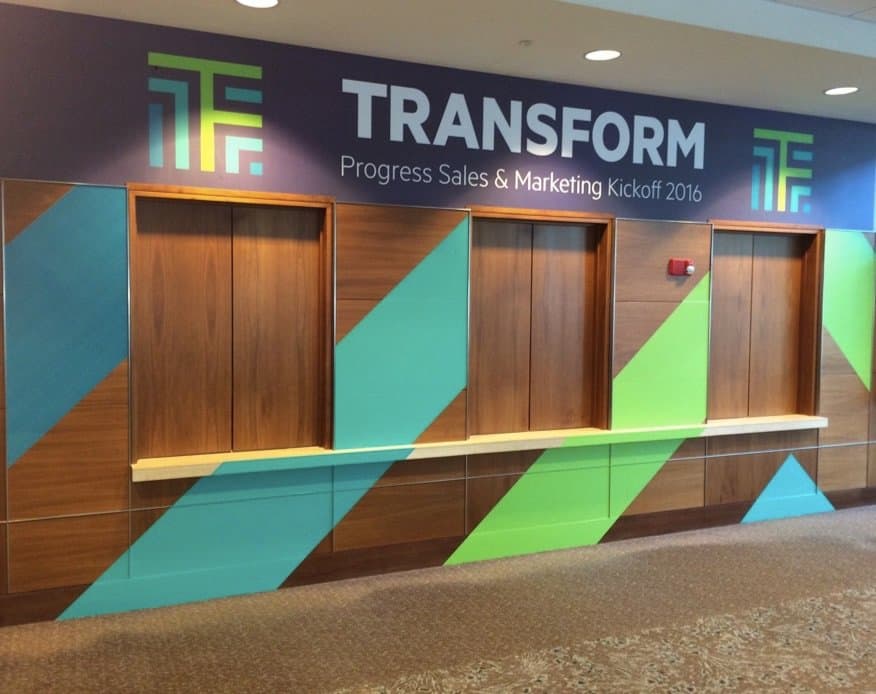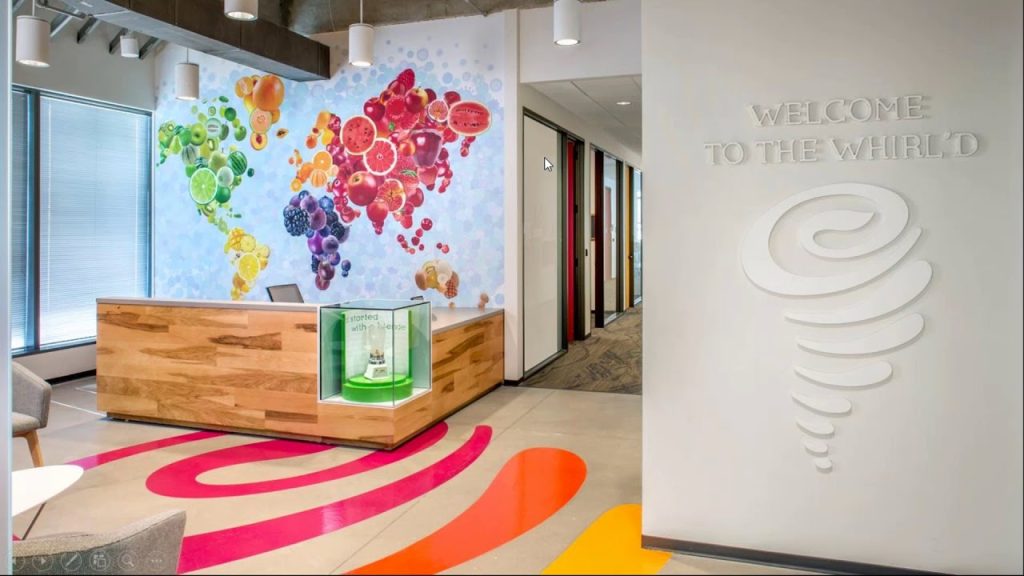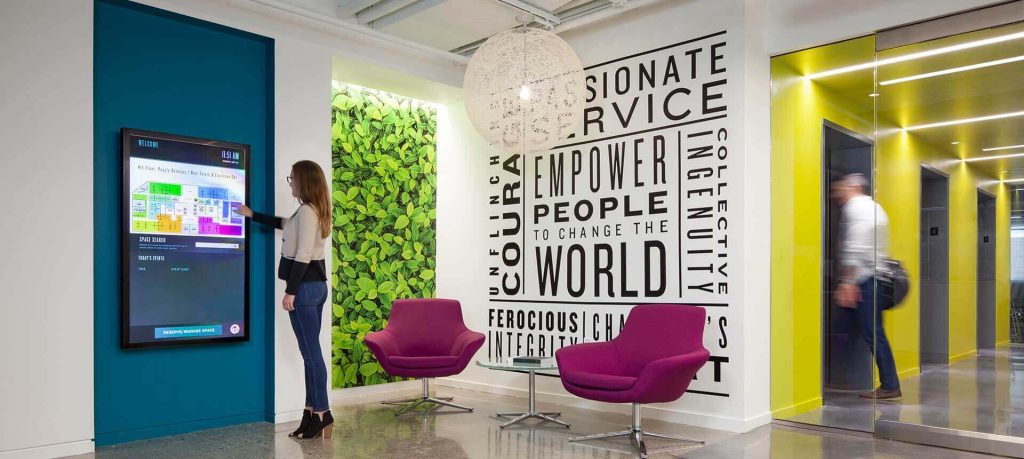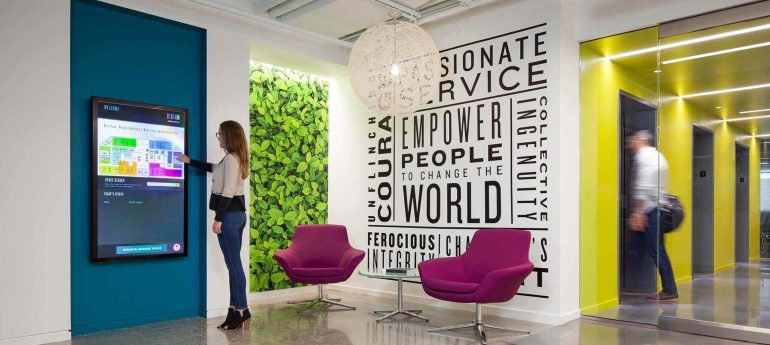Imagine a world without labels, signs, or directions. Confusing, right? Environmental graphic design (EGD) is the hero that saves us from this chaos. It’s the art of using visual components like typography, color, images, and textures to communicate information and enhance user experience within a physical space. EGD is a blend of graphic design, architecture, interior design, and more. It’s a silent language that shapes our experience of the built environment and can even influence our behavior.
The History of EGD
EGD has its roots in prehistoric times, with cave paintings serving as early examples of the art form. Over time, EGD evolved to encompass a wide range of applications, from signage and wayfinding to branding and exhibition design. In the 20th century, EGD gained recognition as a distinct profession, with the establishment of organizations like the Society for Environmental Graphic Design (SEGD) in 1972.

The Building Blocks of EGD
Effective EGD relies on a careful consideration of various elements, including:
- Color: Colors evoke emotions, create hierarchy, and define space. A calming blue museum versus a vibrant children’s play area illustrates the power of color in EGD.
- Imagery: Images can inform, evoke emotions, and set the tone. Using natural textures to create a connection with nature is an example of effective imagery in EGD.
- Typography: Clear and concise fonts ensure easy readability for signage and directions. Legibility is crucial for successful EGD applications.
- Texture: Texture adds depth and dimension to a space. Sensory elements and tactile powers add depth to EGD designs.
The Power of EGD
EGD plays a vital role in our everyday lives. It influences our interactions with the built environment in several ways:
- Simplified Navigation: EGD guides people through unfamiliar spaces, like airports or hospitals, making navigation effortless.
- Enhanced Learning: Museums and exhibitions use EGD to create engaging and informative experiences, fostering knowledge acquisition.
- Inclusive Design: Public art installations can educate and entertain for free, promoting accessibility and inclusivity.
- Branding and Identity: EGD strengthens brand identity and creates consistency across physical and digital spaces.
- Environmental Awareness: EGD can promote sustainable practices, such as energy conservation and recycling.

EGD in Action; Real-World Examples
Environmental graphic design is not just a theoretical concept; it’s a tangible force that shapes our daily experiences. Here are a few examples of how EGD is used in the real world:
- Singapore Changi Airport: Renowned for its seamless passenger experience, Changi Airport utilizes EGD extensively. Clear signage, interactive displays, and captivating graphics guide travelers effortlessly.
- The Metropolitan Museum of Art: The Met employs EGD to create engaging and informative exhibits, telling the stories of art and history. Wayfinding signage, interactive displays, and captivating graphics enhance the visitor experience.
- Nike Retail Stores: Nike’s retail stores use EGD to create an immersive and inspiring shopping experience. Bold graphics, interactive displays, and captivating visuals connect customers with the Nike brand and its products.

Creating Effective EGD
Designing effective EGD requires a deep understanding of the space, its users, and the desired outcome. Here are some key considerations:
- Understanding the Audience: Identifying the target audience and their needs is crucial for creating EGD that resonates with them.
- Context and Environment: Considering the physical context, cultural background, and overall environment is essential for creating appropriate EGD.
- Clarity and Simplicity: Clear and concise messaging, using simple and easy-to-understand language and visuals, is paramount for effective EGD.
- Consistency and Cohesion: Maintaining consistency in design elements and messaging across the entire space ensures a cohesive and unified EGD experience.
- Testing and Evaluation: User testing and evaluation are essential to identify areas for improvement and ensure the EGD is effective in achieving its intended goals.
The Future of EGD
As technology evolves and the built environment becomes more complex, EGD will continue to play an increasingly important role. Emerging trends in EGD include:
- Digital Integration: Integrating digital elements, such as interactive displays and augmented reality, into EGD designs to enhance user engagement and provide personalized experiences.
- Sustainability: Using sustainable materials, incorporating energy-efficient lighting, and promoting eco-friendly practices in EGD designs to minimize environmental impact.
- Data-Driven Design: Utilizing data analytics to understand user behavior and preferences, enabling data-driven EGD designs that are tailored to specific needs and contexts.
- Inclusive and Universal Design: Creating EGD that is accessible and inclusive to all users, regardless of age, ability, or cultural background.

Conclusion
Environmental graphic design (EGD) is an often-overlooked yet essential component of our daily lives. It shapes our experience of the built environment, influences our behavior, and communicates information in a way that is both functional and aesthetically pleasing. As technology evolves and the built environment becomes more complex, EGD will continue to play an increasingly important role, ensuring that spaces are not only functional but also engaging, informative, and inclusive.
By understanding the principles, elements, and applications of EGD, we can create spaces that are more user-friendly, informative, and inspiring. EGD is a powerful tool that has the potential to make a positive impact on our lives and the world around us.
Sources: +++


